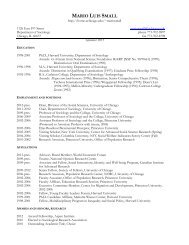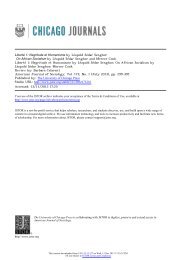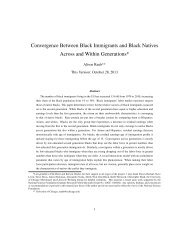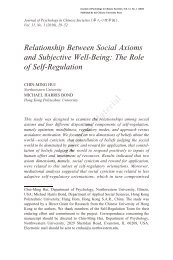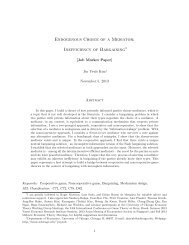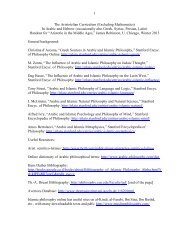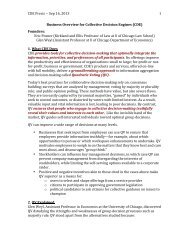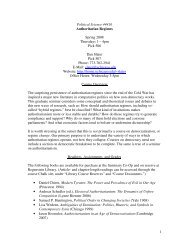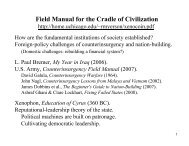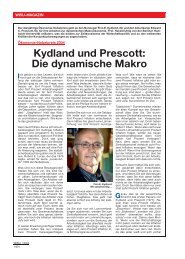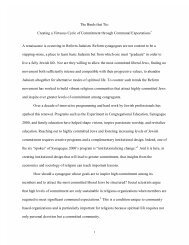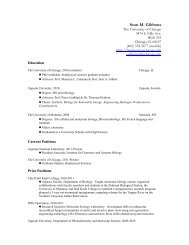Guide to the Study of Early Modern European History For Students ...
Guide to the Study of Early Modern European History For Students ...
Guide to the Study of Early Modern European History For Students ...
You also want an ePaper? Increase the reach of your titles
YUMPU automatically turns print PDFs into web optimized ePapers that Google loves.
There are several good surveys <strong>of</strong> early modern <strong>European</strong> his<strong>to</strong>ry. I highly<br />
recommend two that were published in <strong>the</strong> multi-volume series I mentioned above, H. G.<br />
Koenigsberger, G. L. Mosse, and G. Q. Bowler, Europe in <strong>the</strong> Sixteenth Century, 2nd ed.<br />
(London: Longman, 1989), from <strong>the</strong> Longman General His<strong>to</strong>ry <strong>of</strong> Europe, and Eugene F.<br />
Rice and Anthony Graf<strong>to</strong>n, The Foundations <strong>of</strong> <strong>Early</strong> <strong>Modern</strong> Europe, 1460-1559, 2nd ed. (New<br />
York: W.W. Nor<strong>to</strong>n & Company, 1994) from <strong>the</strong> Nor<strong>to</strong>n His<strong>to</strong>ry <strong>of</strong> <strong>Modern</strong> Europe. Both<br />
reflect a style <strong>of</strong> his<strong>to</strong>rical analysis that was current in <strong>the</strong> 1970s, when <strong>the</strong>y were first<br />
published, but both have been updated. Both are models <strong>of</strong> what a general his<strong>to</strong>rical survey<br />
ought <strong>to</strong> look like. These are <strong>the</strong> two volumes I would read first.<br />
Koenigsberger's account is limited <strong>to</strong> <strong>the</strong> sixteenth century, but since it deals with <strong>the</strong><br />
period in such clear, well-informed, and convincing fashion, it can help you <strong>to</strong> develop an<br />
understanding <strong>of</strong> <strong>the</strong> main areas <strong>of</strong> his<strong>to</strong>rical life that will prove perfectly appropriate <strong>to</strong> <strong>the</strong><br />
fifteenth and <strong>the</strong> seventeenth centuries as well. One <strong>of</strong> its outstanding features is <strong>the</strong> way in<br />
which it integrates social, economic, and political his<strong>to</strong>ry in<strong>to</strong> a single survey.<br />
Rice's book is much briefer and deals with a slightly different period. But Rice is not<br />
only a real master at explaining large-scale his<strong>to</strong>rical phenomena by means <strong>of</strong> tellingly chosen<br />
details. He is also determined <strong>to</strong> focus your attention on <strong>the</strong> complicated interplay between<br />
intellectual, cultural, economic, social, and political his<strong>to</strong>ry. Though you will not find as<br />
many details in his book as in Koenigsberger's, <strong>the</strong> ones you do find may give you a better<br />
grasp <strong>of</strong> <strong>the</strong> fundamental features <strong>of</strong> <strong>the</strong> period. Rice doesn't overwhelm you with details,<br />
but he does inform you about <strong>the</strong> things you really need <strong>to</strong> know.<br />
Something similar can be said about Theodore K. Rabb, The Struggle for Stability in<br />
<strong>Early</strong> <strong>Modern</strong> Europe (New York: Oxford University Press, 1975). This book does not belong<br />
<strong>to</strong> any series, and it does not really <strong>of</strong>fer an overview <strong>of</strong> <strong>European</strong> his<strong>to</strong>ry. It is ra<strong>the</strong>r a<br />
response <strong>to</strong> <strong>the</strong> claim that <strong>the</strong>re was a general crisis in <strong>the</strong> seventeenth century that affected<br />
Europe as a whole and marked one <strong>of</strong> <strong>the</strong> major turning-points in <strong>European</strong> his<strong>to</strong>ry. That<br />
claim was much debated in <strong>the</strong> 1950s and 1960s, and it is alive and well <strong>to</strong>day: see Trevor<br />
As<strong>to</strong>n, ed., Crisis in Europe, 1560-1660 (London: Doubleday Anchor, 1965), Ge<strong>of</strong>frey Parker<br />
and Lesley M. Smith, eds., The General Crisis <strong>of</strong> <strong>the</strong> Seventeenth Century (London: Routledge and<br />
Kegan Paul, 1978), Ge<strong>of</strong>frey Parker and Lesley M. Smith, eds., The General Crisis <strong>of</strong> <strong>the</strong><br />
Seventeenth Century, 2nd ed. (London: Routledge, 1997), and Jonathan Dewald, Ge<strong>of</strong>frey<br />
Parker, Michael Marmé, et al., "AHR <strong>For</strong>um: The General Crisis <strong>of</strong> <strong>the</strong> Seventeenth Century<br />
Revisited," American His<strong>to</strong>rical Review 113 (2008): 1029-99.<br />
Rabb believes that <strong>the</strong>re was in fact a crisis and he <strong>of</strong>fers his own account <strong>of</strong> it. But<br />
he does so from such a broad and clearly defined perspective that this little book can serve<br />
as an excellent introduction <strong>to</strong> <strong>the</strong> entire period from 1300 <strong>to</strong> 1700. It describes and analyzes<br />
<strong>the</strong> arguments for and against different understandings <strong>of</strong> <strong>the</strong> idea <strong>of</strong> a general crisis, and it is<br />
especially good at explaining exactly what came <strong>to</strong> an end in <strong>the</strong> seventeenth century. Most<br />
important, it is one <strong>of</strong> <strong>the</strong> very few books available that succeed at presenting <strong>the</strong> his<strong>to</strong>ry <strong>of</strong><br />
Europe as an integral whole, as opposed <strong>to</strong> dividing it in<strong>to</strong> bits and pieces and proceeding by<br />
adding one bit after ano<strong>the</strong>r. Combining it with Koenigsberger and Rice makes for an<br />
outstanding trio.<br />
I also recommend Richard Bonney, The <strong>European</strong> Dynastic States, 1494-1660 (Oxford:<br />
Oxford University Press, 1991). Bonney's emphasis is on politics, diplomacy, and war, but he<br />
does pay a good deal <strong>of</strong> attention <strong>to</strong> matters like religion, economy, and society. His book is<br />
reliable, well-informed, unusually comprehensive for a volume written by a single author,<br />
and remarkably detailed. If you use this book as a basic frame <strong>of</strong> reference for <strong>the</strong> whole<br />
examination, you won't go wrong.<br />
18<br />
18



